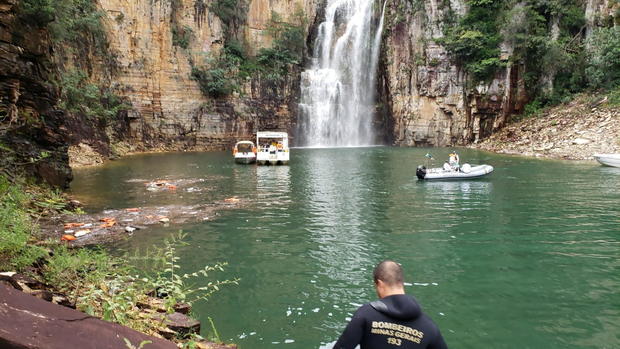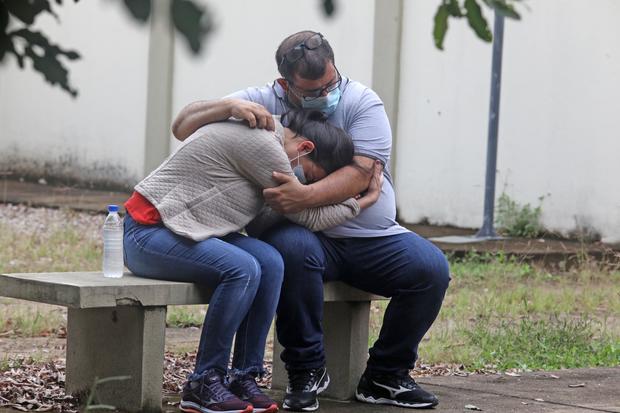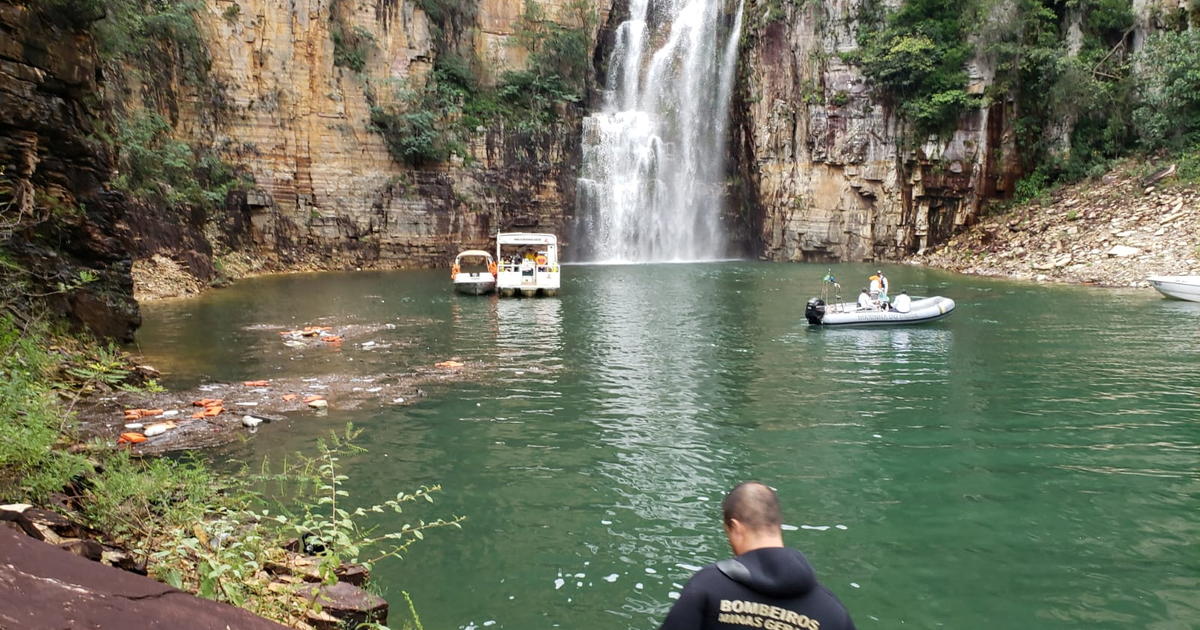Ten people died when a cliff collapsed onto tourist boats on a lake in Brazil, officials said Sunday after the bodies of two missing people were found. On Saturday a large rock fragment broke free of a ravine and plunged onto four boats in Furnas Lake in Brazil’s eastern Minas Gerais state, as panicked tourists watched helplessly from other vessels.
Dramatic videos shared on social networks captured the moment the cliff collapsed.
URGENTE
Rocha desaba sobre banhistas em #EscarpasdoLago (MG)
Confira: https://t.co/xPnulAgs0E #R7Minas pic.twitter.com/zZukQA1cww— Record TV Minas (@recordtvminas) January 8, 2022
The bodies of the two remaining missing individuals were found Sunday by rescuers, civil police commissioner Marcos de Souza Pimenta told reporters.
More than 30 people were injured, including nine who had to be hospitalized, authorities said.

FIRE BRIGADE OF MINAS GERAIS via Getty
The death toll Saturday was originally given as seven, with three people missing.
The 10 who died were part of a group of family and friends on the boat that suffered the biggest impact from the rockfall, according to rescuers.
The victims were all Brazilian nationals, aged between 14 and 68, according to preliminary investigations.
Tourists flock to see the cliffs, caverns and waterfalls that surround the green waters of Lake Furnas, formed by the hydroelectric dam of the same name.
One video, shared on social media, showed the minute before the incident, with several people warning that “lots of stones are falling” and yelling at the occupants of other boats to move away from the rock face.
President Jair Bolsonaro retweeted some of these videos on his account, and said that “as soon as the unfortunate disaster occurred, the Brazilian Navy moved to the site to rescue victims and transport the injured.”
– Momentos antes da tragédia. pic.twitter.com/OcoGaVj63Q
— Jair M. Bolsonaro (@jairbolsonaro) January 8, 2022
In a statement, Bolsonaro said officials would “investigate the causes and circumstances” of the deadly incident.
A diving squad had to pause its search overnight for safety reasons, but other rescuers continued working. Divers resumed their search Sunday.
Extremely heavy rain has fallen in recent days in southeastern Brazil, possibly precipitating the collapse, according to firefighters. On Saturday, a dike overflowed at an iron ore mine 300 kilometers to the east, Reuters reported.
The head of the Applied Geology Division of the Brazilian Geological Service, Tiago Antonelli, told the Associated Press the cliff wall is subject to centuries of erosion and susceptible to rain, heat and cold.
“It’s normal to happen in many canyons, even with rocks of that size. But nowadays, with the intensification of tourism, people are starting to get closer to these places and to register these phenomena with their cell phones,” Antonelli said.
Geographer Eduardo Bulhoes of the Fluminense Federal University told AFP rock falls in the area, where natural erosion is continually taking place, were more likely to occur during the rainy months of December and January.
To avoid future accidents, he said, it would be advisable to keep tourists further away from the cliffs during the rainy season.

Stringer/Anadolu Agency via Getty Images
Download our Free App
For Breaking News & Analysis Download the Free CBS News app





